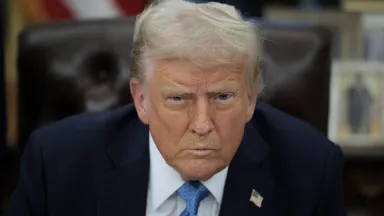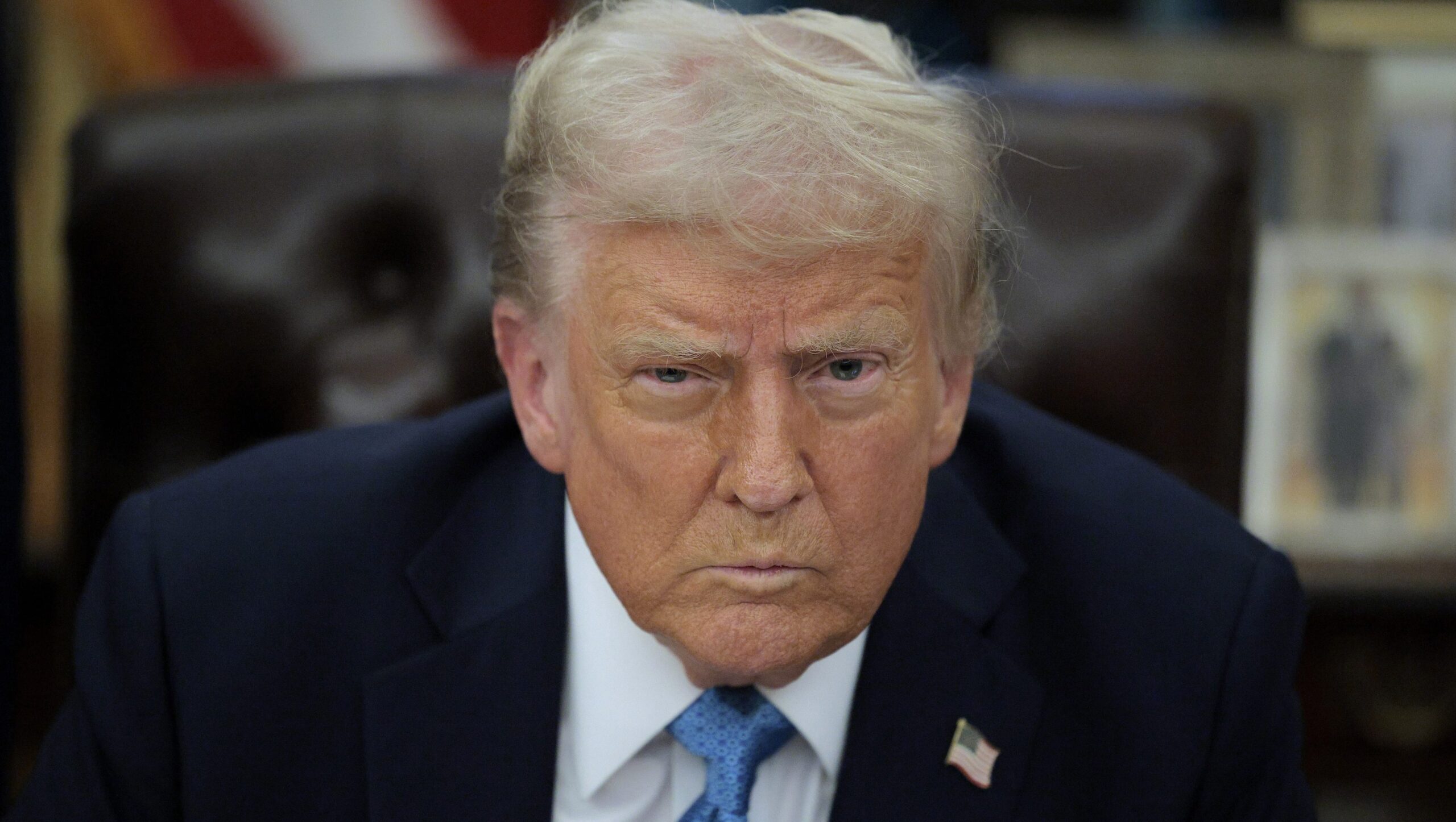
President Donald Trump is ready to renew the substantial tariffs on imports from Canada, Mexico, and China that he first imposed in early February.
“The proposed TARIFFS scheduled to enter impact on MARCH FOURTH will, certainly, go into impact, as scheduled,” Trump wrote in a Fact Social submit.
Nonetheless, Trump has supplied a considerably blended timeline for when the tariffs will take impact. On February 27, White Home Nationwide Financial Council Director Kevin Hassett said on CNBC’s “Squawk Field” that the president would resolve on “tariff coverage for all nations” after reviewing a examine set to be launched on April 1.
On February 1, Trump signed an order imposing 25% tariffs on imports from Mexico and Canada, in addition to a ten% tariff on China. Nonetheless, the tariffs have been paused a couple of days later after Canadian Prime Minister Justin Trudeau and Mexican President Claudia Sheinbaum introduced they have been taking steps to deal with a few of Trump’s calls for.
Proceed studying to be taught extra in regards to the causes behind the tariffs and the way Canada and Mexico responded.
What Are Tariffs?
Tariffs are taxes or duties imposed by a authorities on items imported from different nations. When a rustic imports merchandise, the federal government might cost a tariff to extend the value of these items, making imported objects costlier than regionally produced merchandise.
Tariffs could be imposed for varied causes, together with:
- Defending native industries: By making imported items costlier, home merchandise turn into extra aggressive in worth.
- Elevating authorities income: Tariffs generate cash for the federal government.
- Influencing commerce relations: International locations might use tariffs as a device in commerce negotiations or to punish or reward different nations for his or her insurance policies.
Why Did Trump Impose Tariffs on Canada?
The Trump administration said that the tariffs are meant to cut back the circulate of medication and undocumented immigrants into the U.S.
To implement the tariffs, Trump declared a nationwide financial emergency by way of an govt order on February 1, invoking the Worldwide Emergency Financial Powers Act (IEEPA). This act permits the president to handle imports throughout a nationwide emergency. Trump posted a message on Fact Social on the identical day, explaining that he invoked the IEEPA “because of the main menace posed by unlawful aliens and lethal medicine, together with fentanyl, killing our residents.” He emphasised that it was his obligation as President to “defend People and make sure the security of all.”
In his submit on February 27, Trump reiterated the explanations for resuming the steep tariffs. He claimed, with out offering proof, that “medicine are nonetheless pouring into our Nation from Mexico and Canada at very excessive and unacceptable ranges.”
“A big proportion of those Medication, a lot of them within the type of Fentanyl, are made in, and provided by, China. Greater than 100,000 individuals died final yr because of the distribution of those harmful and extremely addictive POISONS… We can’t enable this scourge to proceed to hurt the USA, and subsequently, till it stops, or is significantly restricted, the proposed TARIFFS scheduled to enter impact on MARCH FOURTH will, certainly, go into impact, as scheduled.”
He additionally added that “China will likewise be charged a further 10% tariff on that date” and that “The April 2nd Reciprocal Tariff date will stay in full power and impact.”
How Did Canada Reply to Trump’s Tariffs?
Canadian Prime Minister Trudeau initially responded on February 1 by asserting that Canada would additionally impose reciprocal 25% tariffs on as much as $155 billion price of U.S. imports, together with objects like alcohol and fruit.
Canada’s response to U.S. tariffs. Justin Trudeau’s finest speech.
Canada will place 25% tariffs on $155 billion in US imports in retaliation for Trump tariffs. That’s an addition to a nationwide boycott on all US merchandise throughout Canada. #cdnpoli #tariffwar pic.twitter.com/VJavxmO6nH
— Nameless (@YourAnonCentral) February 2, 2025
Nonetheless, on February 3, Trump mentioned he anticipated one other “good dialog” with Trudeau after reaching a take care of Mexico’s President, which resulted in a pause on the 25% tariff for Mexico.
How Did Mexico React to the Tariffs?
Mexico’s president additionally issued an order for retaliatory tariffs in response to the U.S. actions on February 1. Sheinbaum took to X to reject accusations from the White Home, calling them “slander” and denying any ties between the Mexican authorities and prison organizations. Sheinbaum emphasised that she had instructed the nation’s economic system secretary to take motion, together with the implementation of the retaliatory tariffs and different measures to guard Mexico’s pursuits.
“If america authorities and its companies needed to deal with the intense fentanyl consumption of their nation, they might combat the sale of medication on the streets of their main cities, which they don’t do and the laundering of cash that this criminality generates that has accomplished a lot hurt to its inhabitants,” she added.
Nonetheless, on February 3, Sheinbaum introduced on social media, simply 12 hours earlier than the tariffs have been set to take impact, {that a} deal had been made with the Trump administration to delay the tariffs. In alternate for a pause on the 25% tariffs, Sheinbaum agreed to deploy 10,000 extra troops, who President Trump mentioned could be assigned to cease the circulate of migrants and unlawful medicine throughout the U.S.-Mexico border.

Leave a Reply